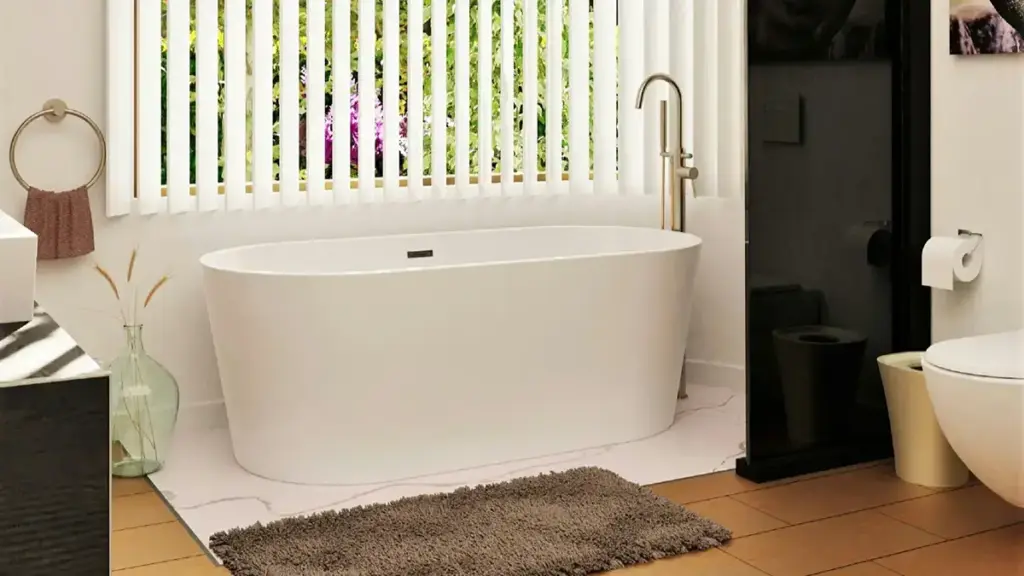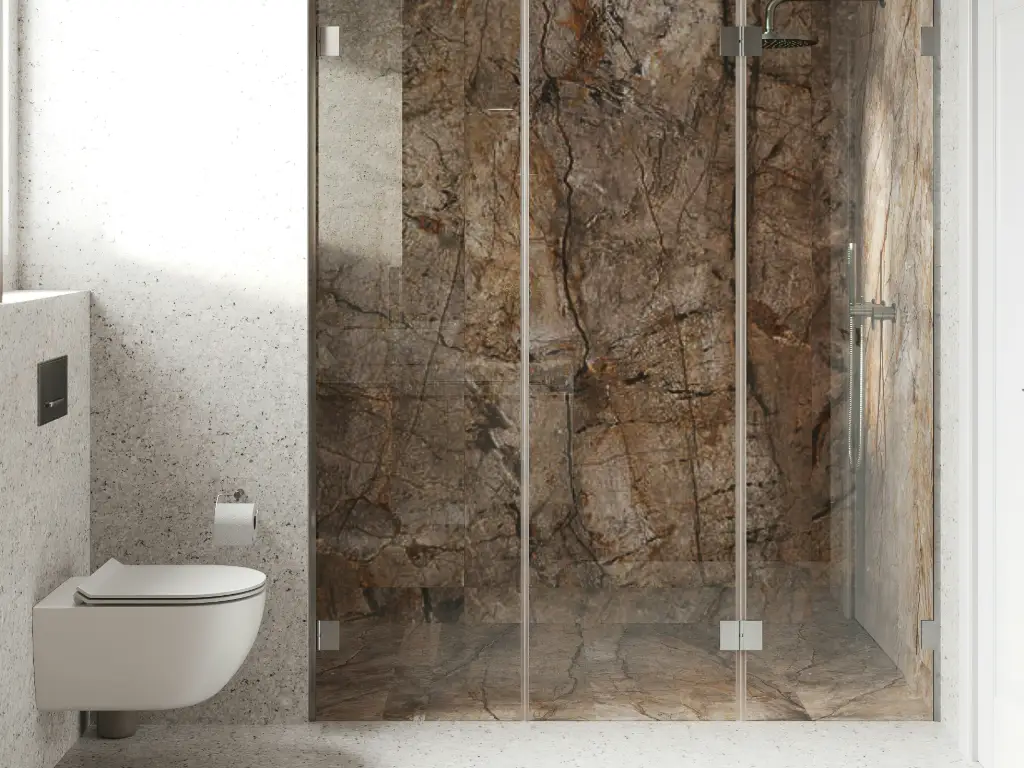هل نظرت يومًا إلى حوض الاستحمام الخاص بك وتساءلت, "مما يتكون هذا الشيء?أنت لست وحدك! يمكن أن تساعدك معرفة مادة حوض الاستحمام الخاص بك في كل شيء بدءًا من التنظيف وحتى التجديدات. سواء كنت تخطط لاستبداله أو تريد فقط فهم كيفية العناية به, إن تعلم كيفية معرفة ما يتكون منه حوض الاستحمام الخاص بك هو مهارة مفيدة. لذا, دعونا نتعمق في الأنواع المختلفة لمواد حوض الاستحمام وكيفية التعرف عليها!
الأنواع الشائعة لمواد حوض الاستحمام
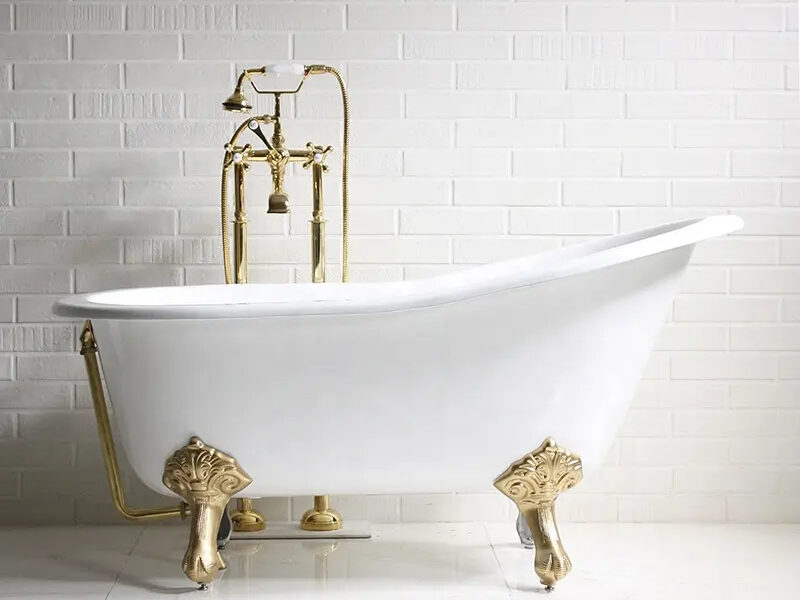
أكريليك
أحواض استحمام أكريليك تحظى بشعبية لأناقتها, نظرة حديثة. إنها خفيفة الوزن, مما يجعلها أسهل في التثبيت. زائد, أنها تأتي في مختلف الأشكال والأحجام! عادة ما يكون الأكريليك لامعًا وناعمًا عند اللمس. إذا قمت بالنقر عليه بلطف, ستلاحظ صوتًا أجوفًا, وهي علامة منبهة للأكريليك.
الألياف الزجاجية
تعتبر أحواض الألياف الزجاجية خيارًا آخر خفيف الوزن. غالبًا ما يكون لديهم سطح محكم, والتي يمكن أن تبدو خشنة بعض الشيء مقارنة بالأكريليك. إذا بدا أن حوض الاستحمام الخاص بك يتمتع بلمسة نهائية غير لامعة ويشعر بأنه أكثر دفئًا قليلاً من المعدن, قد يكون من الألياف الزجاجية. هذه المواد عادة ما تكون أقل تكلفة, لكن ضع في اعتبارك أنه قد يصبح أقل متانة بمرور الوقت.
بورسلين-مينا على فولاذ
تعتبر مينا البورسلين على الأحواض الفولاذية كلاسيكية كما هي. لديهم لامعة, سطح صلب يمكن أن يكون جميلاً جدًا. لكن, إذا طرقت على الجانب, ستسمع صوتًا معدنيًا, وهو دليل كبير! هذه الأحواض أثقل, مما قد يجعل التثبيت صعبًا بعض الشيء, لكنها معروفة بمتانتها.
الحديد الزهر
إذا كان لديك حوض استحمام من الحديد الزهر, ستعرفه من وزنه، فهؤلاء الأطفال ثقيلو الوزن! لديهم سميكة, ملمس قوي وعادةً ما يأتي بلمسة نهائية من البورسلين. يمكن أن يكون السطح أملسًا أو محكمًا, والصنبور سوف ينتج عميقا, صوت رنان. في حين أنها تتطلب المزيد من الجهد لتثبيت, إنها طويلة الأمد بشكل لا يصدق.
حجر
حمامات حجرية هي خيار فاخر وتأتي بمواد طبيعية مختلفة مثل الرخام أو الجرانيت. إنها مذهلة بلا شك ولكنها يمكن أن تكون ثقيلة جدًا. عادة ما يكون الحوض الحجري باردًا, شعور قوي, ويمكن أن يكون السطح مصقولًا أو خشنًا. إذا كان لديك الميزانية, يمكن للحوض الحجري أن يدلي ببيان مثير في أي حمام.
المؤشرات البصرية واللمسية
نسيج السطح
- حوض اكريليك: فائق النعومة مع لمسة نهائية لامعة, مما يجعل من السهل تنظيفها وصيانتها.
- حوض من الألياف الزجاجية: نسيج أكثر خشونة قليلا, والتي يمكن أن تحبس حثالة الصابون بسهولة أكبر.
- مينا بورسلين على حوض فولاذي: سطح صلب ولامع يشبه الزجاج; من السهل أن تمسح.
- حوض من الحديد الزهر: ملمس قوي وثقيل مع سطح محكم, غالبًا ما يكون أكثر برودة قليلاً عند اللمس.
- حوض حجري: يختلف من مصقول وناعم إلى خشن وريفي, عرض الأنماط الطبيعية والعيوب.
وزن
- حوض أكريليك أو ألياف زجاجية: خفيف الوزن, مما يجعل التثبيت أسهل.
- حوض من الحديد الزهر: ثقيل جدا, توفير الصلبة, وجود مطمئن في الحمام.
- حوض حجري: ثقيلة أيضا, مع التركيز على الفخامة والمتانة.
- حوض من البورسلين والمينا: يسقط بينهما – صلبًا ولكن ليس ثقيلًا مثل الحديد الزهر أو الحجر.
اللون والانتهاء
- حوض اكريليك: متوفر بألوان نابضة بالحياة مع لمعان لامع.
- حوض من الألياف الزجاجية: غالبا ما يأتي بألوان مختلفة, على الرغم من أنه عادةً ما يكون ذو لمسة نهائية غير لامعة.
- حوض من البورسلين والمينا: لمسة نهائية بيضاء كلاسيكية, لامعة في كثير من الأحيان, إعطاء مظهر جديد ونظيف.
- حوض من الحديد الزهر: قد يكون أبيض مع مظهر غير لامع أكثر, إضافة لمسة خمر.
- حوض حجري: يعرض اختلافات الألوان الطبيعية والقوام, كل واحدة فريدة وغنية بالشخصية.
طرق الاختبار
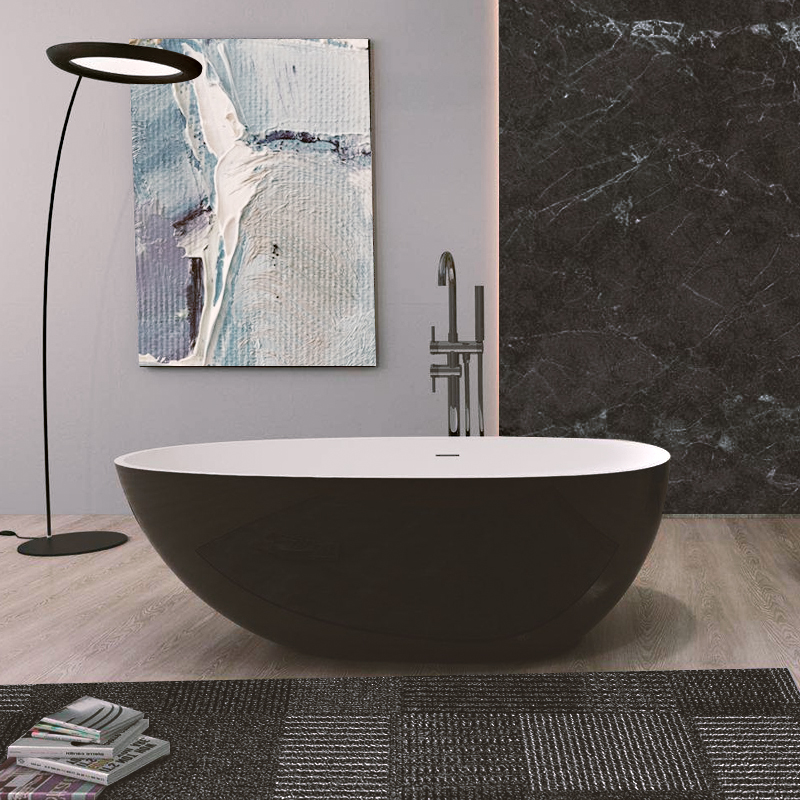
اختبار الصفر
يعد اختبار الخدش طريقة مباشرة للتعرف على حوض الاستحمام الخاص بك. استخدم أداة حادة واخدش منطقة غير واضحة برفق.
- إذا خدش بسهولة, من المحتمل الألياف الزجاجية.
- إذا بقي السطح سليما, ربما كنت تنظر إلى الخزف أو الحديد الزهر.
اختبار المغناطيس
للأحواض المعدنية, الاستيلاء على المغناطيس.
- إذا كان العصي, لديك حوض فولاذي (أيضاً المينا الخزفية أو الحديد الزهر).
- إذا لم يلتصق, من المحتمل أن يكون حوض الاستحمام الخاص بك أكريليك أو الألياف الزجاجية.
اختبار المياه
بسيطة ولكنها فعالة! صب بعض الماء على السطح.
- إذا خرز الماء وتدحرج, ربما هذا هو الحال أكريليك أو الألياف الزجاجية (غير مسامية).
- إذا انتشر الماء ونقع فيه, قد يكون لديك حجر حوض (مسامية).
اختبار الحرارة
إذا كنت غير متأكد, حاول اختبار الحرارة. قم بتشغيل الماء الساخن في الحوض وتحسس السطح.
- إذا كان الحوض دافئًا عند اللمس, من المحتمل أن يكون أكريليك أو ألياف زجاجية.
- إذا احتفظ بالحرارة لفترة طويلة, من المحتمل أنك تتعامل مع الحديد الزهر أو البورسلين.
كيفية اختيار مادة حوض الاستحمام?
إن اختيار مادة حوض الاستحمام المناسبة يعتمد حقًا على نمط حياتك وتفضيلاتك الشخصية. فيما يلي بعض العوامل الرئيسية التي يجب مراعاتها:
- متانة: فكر في المدة التي تريد أن يستمر فيها حوض الاستحمام الخاص بك. إذا كنت تبحث عن شيء قوي, يعد الحديد الزهر أو المينا الخزفية خيارًا كلاسيكيًا.
- صيانة: تتطلب بعض المواد صيانة أكثر من غيرها. إذا كنت تريد شيئًا منخفض الصيانة, يمكن أن يكون الأكريليك أو الألياف الزجاجية هو الحل الأمثل.
- الوزن والتركيب: هل تريد حوضًا خفيف الوزن لتسهيل التركيب؟? في هذه الحالة, الأكريليك أو الألياف الزجاجية هو خيارك الأفضل.
- أسلوب: إذا كنت تبحث عن نظرة خالدة, تتمتع أحواض الحديد الزهر والمينا الخزفية بسحر لا يخرج عن الموضة أبدًا.
من خلال وزن هذه العوامل, يمكنك العثور على مادة حوض الاستحمام التي تناسب تمامًا احتياجاتك وتفضيلاتك!
ما هو أفضل نوع من مواد حوض الاستحمام?
أفضل نوع من مواد حوض الاستحمام يعتمد على احتياجاتك. عند اتخاذ قرار بشأن حوض الاستحمام الجديد الخاص بك, أ مقارنة مواد حوض الاستحمام يمكن أن تساعدك في الموازنة بين إيجابيات وسلبيات خيارات مثل الأكريليك, الألياف الزجاجية, الحديد الزهر, والمينا الخزفية.
أكريليك و الألياف الزجاجية رائعة للوزن الخفيف, خيارات صيانة منخفضة. الحديد الزهر و المينا الخزفية توفر المتانة والجمالية الخالدة. إذا كنت تبحث عن الرفاهية, حجر هو أيضًا اختيار رائع. النظر في عوامل مثل المتانة, صيانة, والأسلوب للعثور على ما يناسبك!
اعتبارات الصيانة
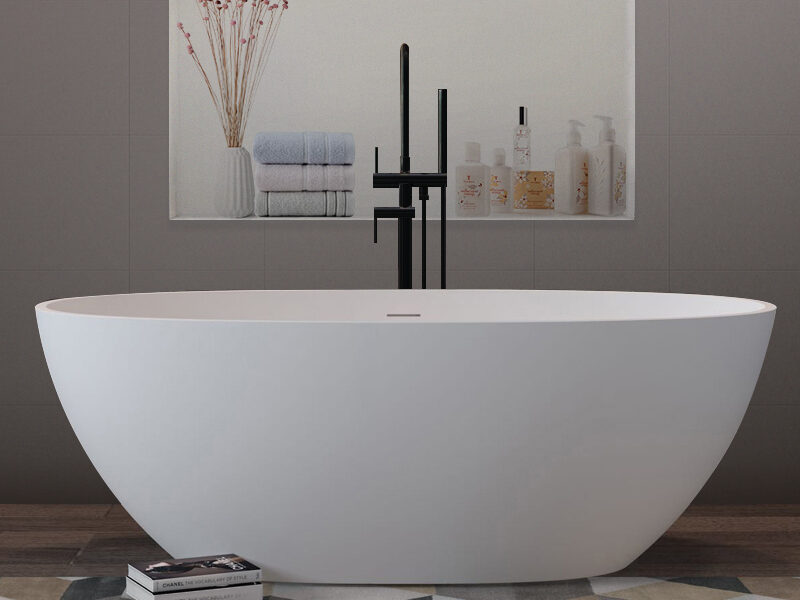
نصائح التنظيف للمواد المختلفة
تتطلب كل مادة من مواد حوض الاستحمام طرق تنظيف محددة. للاكريليك, استخدم منظفًا لطيفًا وقطعة قماش ناعمة. تحتاج الألياف الزجاجية إلى منتجات غير كاشطة لمنع الخدوش. يمكن للبورسلين والحديد الزهر التعامل مع المنظفات القوية, ولكن كن حذرا لتجنب إتلاف النهاية. يتطلب الحجر منظفات ذات درجة حموضة متوازنة للحفاظ على جماله.
إصلاح مقابل. استبدال
عندما يتعلق الأمر بالإصلاحات, النظر في المواد. غالبًا ما يمكن تلميع الخدوش البسيطة على الأكريليك, بينما قد تحتاج الألياف الزجاجية إلى مجموعة تصحيحات. للخزف أو الحديد الزهر, يمكن في كثير من الأحيان إصلاح الرقائق, لكن الأضرار الجسيمة قد تتطلب الاستبدال.
خاتمة
يعد فهم كيفية معرفة المادة التي يتكون منها حوض الاستحمام الخاص بك أمرًا ضروريًا للرعاية والصيانة المناسبة. سواء كان أكريليك, الألياف الزجاجية, مينا بورسلين على فولاذ, الحديد الزهر, أو الحجر, كل مادة لها سماتها الفريدة وتتطلب اهتماما خاصا. من خلال معرفة العلامات وإجراء اختبارات بسيطة, يمكنك الحفاظ على مظهر حوض الاستحمام الخاص بك وشعورًا رائعًا لسنوات قادمة!
الأسئلة الشائعة
- ما هي مادة حوض الاستحمام الأكثر متانة? يعد الحديد الزهر والحجر من أكثر المواد متانة, يدوم لعقود من الزمن مع الرعاية المناسبة.
- كيف يمكنني صيانة حوض الاستحمام الأكريليكي الخاص بي؟? استخدمي منظفًا لطيفًا وقطعة قماش ناعمة. تجنب استخدام أجهزة التنظيف الكاشطة للحفاظ على السطح خاليًا من الخدوش.
- هل حوض الاستحمام من الحديد الزهر يستحق الاستثمار؟? نعم! في حين أنها أثقل وأغلى ثمناً, توفر أحواض الحديد الزهر متانة لا مثيل لها وجاذبية كلاسيكية.
- هل يمكنني طلاء حوض الاستحمام المصنوع من الألياف الزجاجية؟? نعم, لكن تأكد من استخدام طلاء مصمم خصيصًا للألياف الزجاجية لضمان الالتصاق والمتانة المناسبين.
- كيف يمكنني منع حدوث الخدوش في حوض الاستحمام المصنوع من البورسلين؟? تجنب استخدام المنظفات والأدوات الكاشطة. امسحها بانتظام بقطعة قماش ناعمة للحفاظ على مظهرها الأصلي!



